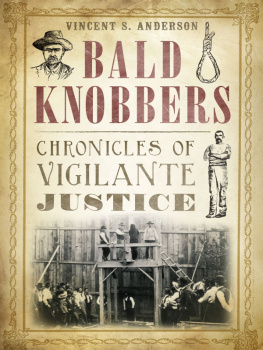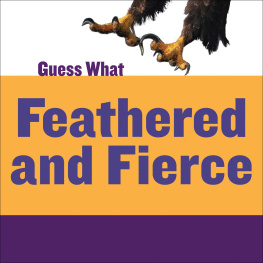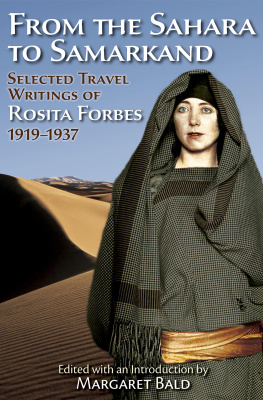
Published by The History Press
Charleston, SC 29403
www.historypress.net
Copyright 2013 by Vincent S. Anderson
All rights reserved
Front cover, bottom: Before the Drop, circa 1896. D.S. Cole, Carrolton, Missouri. Library of Congress Prints and Photographs Division, Washington, D.C., LC-USZ62-79432.
First published 2013
e-book edition 2013
Manufactured in the United States
ISBN 978.1.62584.670.9
Library of Congress Cataloging-in-Publication Data
Anderson, Vincent S.
Bald knobbers : chronicles of vigilante justice / Vincent S. Anderson.
pages cm
print edition ISBN 978-1-62619-201-0 (pbk.)
1. Vigilance committees--Missouri--19th century. 2. Vigilantes--Missouri--History--19th century. 3. Crime--Missouri--History--19th century. 4. Criminals--Missouri--History--19th century. I. Title.
HV6452.M8A53 2013
364.1097788--dc23
2013027083
Notice: The information in this book is true and complete to the best of our knowledge. It is offered without guarantee on the part of the author or The History Press. The author and The History Press disclaim all liability in connection with the use of this book.
All rights reserved. No part of this book may be reproduced or transmitted in any form whatsoever without prior written permission from the publisher except in the case of brief quotations embodied in critical articles and reviews.
CONTENTS
DEDICATION
As a young boy growing up in Ozark County, Missouri, I had always heard the saga of the notorious Bald Knobbers. These Ozark vigilantes have become a part of Ozark folklore, and they have always held my fascination. I remember seeing them represented by manikins at Silver Dollar City near Branson, Missouri, and scenes of them were painted on the walls at the Fire in the Hole ride. The Bald Knobbers also make their nightly raid and set a cabin on fire in the outdoor drama The Shepherd of the Hills.
When I was a child, my favorite singing group was the Baldknobbers Hillbilly Jamboree Stage Show from Branson, Missouri. George Aggernite (Lyle W. Mabe) was one of the main characters I always watched on stage because, in my mind, he was larger than life. Every so often, he would also appear on the nightly ten oclock Channel 3 News, KYTV, out of Springfield, Missouri. George would crack a few jokes or ad-lib to somebody, while doing a commercial for Empire Gas before the weather forecast. I didnt get to watch him often because we didnt have a TVwe lived too far in the valley to get a signal. Sometimes, I would spend the night at my grandmothers home because she had a TV, and I knew she would watch the ten oclock news. Consequently, I would see George Aggernite with his toothless smile.
I also remember the Baldknobbers Hillbilly Jamboree Stage Show traveling to nearby Mountain Home, Arkansas, in late April 1972 for a performance. Ticket prices were $1.25 for adults and $0.50 for children. This jamboree consisted of some wild characters and great musicians, such as the Wild Man on the guitar, Droopy Drawers playing the washboard and George Aggernite thumping a string on a washtub. The small school stage was packed full of musicians and equipment, and the night began in the gym auditorium with enormous excitement. After the second song, comedian George Aggernite was announced. As he ran onto the stage, he tripped over his washtub and fell off the platform. A collective moan could be heard across the auditorium. George Aggernite was the consummate entertainer and performer; he crawled back on the stage, cracked a few jokes, played a song and then went backstage to bandage his cut leg. He came back a few moments later and acted like nothing was wrong.

Baldknobber Hillbilly Jamboree Stage Show, 1972. Authors collection.
After reading the articles in this book, one might see the term Bald Knobber as a name that is despised and unredeemable. The initial vigilante leader of the Bald Knobbers was a man named Captain Nathaniel N. Kinney, whose nickname was the Old Blue Gobbler. It is with him that the lore of the Bald Knobbers began. Nevertheless, this book is dedicated to the memory of George Aggernite, a different kind of Baldknobber, who brought smiles and laughter to the Ozark hills, where there had been dissention, poverty and tears.
Thanks, Mr. Aggernite.
INTRODUCTION
In the past, the Ozarks had a few regional political parties of their own, though we havent seen them on the ballot lately. The two parties Im referring to are the Bald Knobbers and the Anti-Bald Knobbers. To the defense of the Bald Knobbers, it all started out with good intentions: the determination of freedom to practice their religion and morals. As we look at these historical characters, not only will we discover the prejudice and terror once endured, but we may also discover the darker side of our natures. These events spanned mostly Taney and Christian Counties in Missouri. Yet the surrounding Ozark region and counties also had divided hearts concerning the issues of that time.
One book chronicling these Ozark desperadoes is called Bald Knobbers: Vigilantes on the Ozarks Frontier by Elmo Ingenthron and Mary Hartman. According to these authors, the Bald Knobbers were mostly Republicans and former Unionists, while the Anti-Bald Knobbers were mostly Democrats and former Confederate soldiers.
Over the past five years, I have read and compiled over six hundred old newspaper articles concerning the Bald Knobbers. Many were repeated in similar wording and fashion. During my research, I have distilled the Bald Knobber saga into forty-nine chapters. Many chapters are a compilation of two to five articles. The purpose of this book is to present the original newspaper articles that covered the 1880s and 90s perspectives of the Bald Knobbers. Additionally, these stories are for the readers to glean for themselves the facts as people from that era did.
These stories contain interviews, letters, confessions and testimonies of many of the main characters of the region. Additionally, some biographical details and genealogical information of prominent Bald Knobbers are furnished. The crimes and punishments are documented in graphic detail. I have endeavored to maintain the integrity of the original letters written by Bald Knobbers, including the nineteenth-century spelling and the unique newsprint format concurrent with the 1880s and 90s. Furthermore, these chapters contain a record of everyday life in the Ozarks, including the local Ozark vernacular and euphuisms. These stories also document the prejudice from the North and its perceptions of hillbilly ignorance in southern states.
I have endeavored to compile, transcribe and edit these news articles in the historical essence and flavor in which they were originally written. Though some stories and lines contain the bias of that era, I have not deleted or edited them. These articles are not all inclusive, but they provide snapshots that are a part of our Ozarks history.
VINCENT S. ANDERSON
Part I
TANEY COUNTY

Galbraiths Railway Mail Service Maps, Taney County, Missouri, 1898. Library of Congress.
THE ORIGIN OF THE BALD KNOBBER IDEA
The Bald Knob Society originated in Taney [pronounced Tawney] county. In the language of Parson Dennison, an opponent, it was a beam-eyed society for the eradication of notes. The man who conceived the idea and became the Grand Chief of the order was Capt. N.N. Kinney. He lived on a ranch near Forsyth, the county seat. Kinney was a remarkable man in several respects. He was 6 feet 6 inches tall, but was so well proportioned that no one would have thought him so tall unless he were standing by an ordinary six-footer.
Next page












